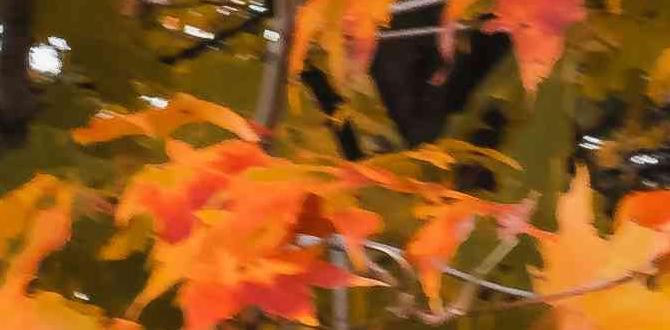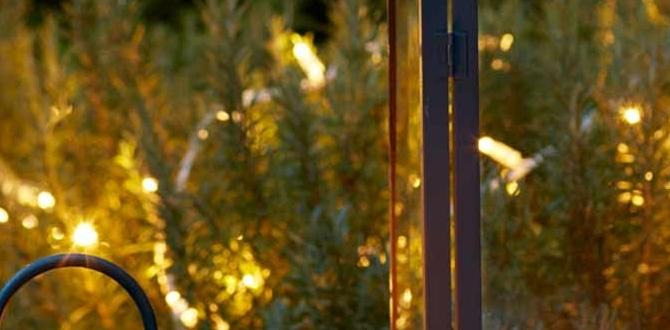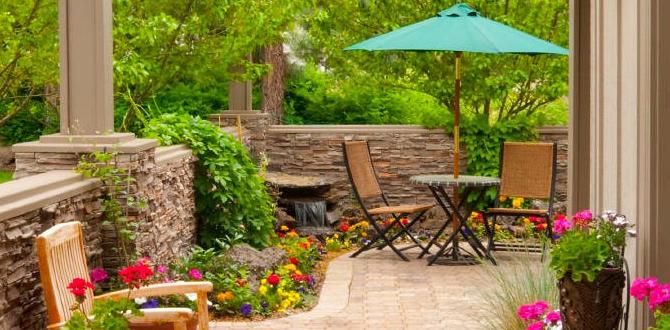Stunning summer blooms are achievable for everyone! Discover the best flowering plants for summer that thrive in the heat, need minimal fuss, and will bring vibrant color to your garden or balcony with this easy guide. Get ready for a season of gorgeous blossoms!
Flowering Plants for Summer: Your Essential Bloom Guide
Dreaming of a garden bursting with color all summer long? If your past attempts at summer blooms have ended in sad, wilted petals, you’re not alone! Many beginner gardeners struggle to find plants that can handle the intense summer sun and heat. It can be frustrating to invest time and effort only to see your plants falter. But don’t worry! With the right knowledge, you can transform your space into a summer paradise. This guide will walk you through the most resilient and beautiful flowering plants perfect for this season. Get ready to make your garden the envy of the neighborhood!
Why Choose Summer-Blooming Flowers?
Summer is the peak of gardening season, and what better way to celebrate than with a riot of color? Flowering plants that bloom during the summer offer a continuous display of beauty, attracting beneficial insects like bees and butterflies. They can transform dull spaces into vibrant havens. Choosing the right plants for summer means you’re selecting varieties that are naturally equipped to withstand higher temperatures and longer daylight hours. This leads to less stress for you and more joy from your garden.
Understanding Your Summer Gardening Needs
Before diving into plant choices, let’s briefly consider what makes summer gardening unique and what your plants will need:
- Sunlight: Most summer-blooming plants adore sunshine, often craving at least 6-8 hours of direct sun per day.
- Water: Summer heat means plants can dry out quickly. Consistent watering is key, especially for newly planted flowers. Early morning watering is usually best to reduce evaporation and prevent fungal diseases.
- Soil: Well-draining soil is crucial. It prevents waterlogged roots, which can lead to rot. Amending your soil with compost before planting is a great way to improve its structure and fertility.
- Heat Tolerance: Selecting plants known for heat tolerance is your secret weapon against summer wilting.
Top Flowering Plants for Summer: A Beginner’s Selection
Here are some tried-and-true flowering plants that are perfect for beginners and promise a spectacular summer show. We’ve chosen a mix of annuals and perennials, as well as options for different sun exposures.
Sun-Loving Stars for Your Garden
These beauties truly shine when given plenty of direct sunlight. They are robust and will reward your efforts with abundant blooms from early summer until the first frost.
1. Zinnia (Zinnia elegans)
Zinnias are the quintessential summer flower. They come in almost every color imaginable, from bright reds and oranges to soft pinks and whites. They are incredibly easy to grow from seed and attract butterflies like magnets. Regular deadheading (removing spent flowers) will encourage even more blooming.
- Sunlight: Full sun (6-8+ hours)
- Water: Moderate, allow soil to dry slightly between waterings.
- Soil: Well-draining, fertile soil.
- Height: Varies from 6 inches to 3 feet.
- Bloom Time: Summer through fall.
2. Marigold (Tagetes spp.)
Marigolds are cheerful, fuss-free flowers known for their golden, orange, and yellow hues. They are excellent at deterring common garden pests, making them a dual-purpose plant! They are also very drought-tolerant once established.
- Sunlight: Full sun (6+ hours)
- Water: Low to moderate; drought-tolerant once established.
- Soil: Adaptable to most well-draining soils.
- Height: 6 inches to 3 feet.
- Bloom Time: Early summer to frost.
3. Petunia (Petunia × atkinsiana)
With their trumpet-shaped blossoms in a wide array of colors and patterns, petunias are a garden favorite. They are perfect for borders, hanging baskets, and containers. Look for newer varieties that are more resistant to disease and prolonged rain.
- Sunlight: Full sun to partial shade (at least 6 hours of sun for best blooming).
- Water: Moderate; keep soil consistently moist but not soggy.
- Soil: Rich, well-draining soil.
- Height: Trailing varieties can spread 2-4 feet; upright varieties grow 1-1.5 feet.
- Bloom Time: Late spring through fall.
4. Sunflower (Helianthus annuus)
What’s more iconic for summer than a sunflower? From dwarf varieties perfect for pots to towering giants, sunflowers bring instant cheer. They are easy to grow from large seeds and require minimal care. Many varieties produce edible seeds too!
- Sunlight: Full sun (8+ hours)
- Water: Moderate; deep watering is best.
- Soil: Well-draining, fertile soil.
- Height: 2 feet to over 12 feet.
- Bloom Time: Mid-summer to early fall.
5. Coneflower (Echinacea purpurea)
A beautiful native perennial that thrives in the heat, coneflowers feature daisy-like flowers with prominent, cone-shaped centers. The classic purple variety is striking, but you can also find them in pink, white, yellow, and orange. They are drought-tolerant and attract pollinators.
- Sunlight: Full sun to partial shade (at least 6 hours of sun is ideal).
- Water: Low to moderate; drought-tolerant once established.
- Soil: Well-draining, can tolerate poorer soils.
- Height: 2-4 feet.
- Bloom Time: Early to late summer.
6. Lantana (Lantana camara)
Lantana is an absolute champion for hot, dry conditions. Its clusters of small, colorful flowers change hues as they mature, often displaying a mix of reds, oranges, yellows, and pinks. It’s a magnet for butterflies and requires very little attention once established.
- Sunlight: Full sun (6-8+ hours)
- Water: Low; very drought-tolerant.
- Soil: Well-draining, poor soils as well as rich.
- Height: 1-4 feet depending on variety.
- Bloom Time: Summer through fall.
Partial Shade Sweethearts
Don’t have a full sun garden? No problem! These flowering plants will bring beauty to spots that receive dappled or afternoon shade.
1. Impatiens (Impatiens walleriana and others)
For shady spots, impatiens are a go-to for continuous color. They offer a vibrant display of blooms in shades of pink, red, purple, white, and orange. They prefer consistently moist soil and will brighten up the darkest corners of your garden or patio.
- Sunlight: Partial to full shade (4-6 hours of filtered sun or morning sun).
- Water: Consistent moisture; do not let soil dry out completely.
- Soil: Rich, moist, well-draining soil.
- Height: 6 inches to 2 feet.
- Bloom Time: Spring through fall.
2. Begonia (Begonia spp.)
Begonias are incredibly versatile, offering beautiful flowers and often attractive foliage. Many varieties thrive in shade and moist conditions, making them excellent for containers, hanging baskets, and garden beds that don’t get direct sun all day. Wax begonias are particularly easy for beginners.
- Sunlight: Partial to full shade.
- Water: Moderate; keep soil consistently moist but avoid overwatering.
- Soil: Humus-rich, well-draining soil.
- Height: 6 inches to 2 feet.
- Bloom Time: Varies, but many bloom throughout summer and fall.
3. Astilbe (Astilbe spp.)
Known for their feathery, plume-like flower spikes, astilbes add a touch of elegance to shady garden areas. They come in lovely shades of pink, red, white, and lavender. They prefer consistently moist, humus-rich soil, making them ideal for areas near water features or where they can be reliably watered.
- Sunlight: Partial shade to full shade.
- Water: Consistent moisture; thrives in damp conditions.
- Soil: Rich, moist, well-draining, organic-rich soil.
- Height: 1-4 feet.
- Bloom Time: Early to late summer, depending on variety.
Caring for Your Summer Bloomers: Simple Steps
Once you’ve chosen your plants, a little consistent care will keep them happy and blooming throughout the summer. Here’s a breakdown of what to do:
Planting Your Summer Flowers
- Choose the Right Spot: Based on your plant’s light needs (full sun, partial shade).
- Prepare the Soil: Loosen the soil to a depth of about 12 inches. Mix in a generous amount of compost or well-rotted manure. A good rule of thumb is to include about 2-3 inches of compost. For more on soil health, check out resources from the USDA’s Natural Resources Conservation Service on soil health.
- Dig the Hole: Dig a hole that is as deep as the plant’s root ball and twice as wide.
- Remove from Pot: Gently slide the plant out of its nursery pot. If the roots are tightly packed (root-bound), gently tease them apart with your fingers.
- Plant: Place the plant in the hole so the top of the root ball is level with the surrounding soil.
- Backfill and Water: Fill the hole with soil, gently firming it around the base of the plant. Water thoroughly after planting to settle the soil and eliminate air pockets.
Watering Wisdom
Water deeply rather than frequently. This encourages roots to grow deeper into the soil, making plants more resilient. Water in the early morning to allow foliage to dry before nightfall, reducing the risk of fungal diseases.
Feeding Your Flowers
Most summer-blooming annuals benefit from a balanced liquid fertilizer every 4-6 weeks. Perennials are typically less demanding but can appreciate a spring feeding with a slow-release fertilizer. Over-fertilizing can lead to excessive leafy growth and fewer flowers.
Deadheading for More Blooms
This is one of the simplest yet most effective ways to encourage continuous blooming. As soon as a flower starts to fade, pinch or snip it off just above a set of leaves or a new bud. This prevents the plant from putting energy into producing seeds and redirects it to making more flowers.
Pest and Disease Patrol
Regularly inspect your plants for any signs of trouble. Many common summer flowers like marigolds and zinnias are relatively pest-resistant. For others, identify the pest or disease early. Often, a strong spray of water can dislodge aphids, and good air circulation and proper watering practices can prevent most fungal issues.
Container Gardening with Summer Flowers
Don’t have a traditional garden? No problem! Many summer-blooming plants are perfectly suited for containers, balconies, and patios.
Best Plants for Containers
- Petunias: Trailing varieties are spectacular in hanging baskets and window boxes.
- Zinnias: Smaller, more compact varieties work well in pots.
- Marigolds: Their cheerful colors brighten any container.
- Geraniums (Pelargonium spp.): While not true geraniums, these are classic container flowers that love sun and heat.
- Million Bells (Calibrachoa spp.): These are like mini petunias, perfect for trailing over the edges of pots.
- Dwarf Sunflowers: Growable in larger pots.
Container Care Tips
- Use good potting mix: Never use garden soil in containers; it compacts too easily.
- Ensure drainage: Pots must have drainage holes.
- Water more often: Containers dry out much faster than garden beds. Check daily, especially during hot spells.
- Fertilize regularly: Nutrients leach out of pots faster, so feeding every 2-4 weeks is often necessary for annuals.
Creating a Pollinator Paradise
Summer flowers are a vital food source for bees, butterflies, and other beneficial insects. By choosing a variety of plants that bloom throughout the season, you can create a beautiful and functional habitat for these important visitors.
Pollinator-Friendly Plants
- Coneflower (Echinacea): A favorite for many pollinators.
- Zinnia: Attracts butterflies and bees.
- Sunflower: Provides nectar and pollen, and seeds for birds.
- Lantana: A butterfly magnet.
- Salvia: Many varieties are excellent for pollinators.
- Bee Balm (Monarda spp.): A must-have for attracting bees and hummingbirds.
By planting a diversity of flowers, you provide a continuous food source from spring through fall. This helps support local populations of pollinators, which are crucial for our ecosystem. For more on creating pollinator gardens, visit the Pollinator Partnership.
A Quick Look: Summer Flowering Plants at a Glance
Here’s a handy table to compare some of our top summer blooming plant picks:
| Plant Name | Sunlight Needs | Water Needs | Ideal For | Bloom Color(s) | Ease of Care |
|---|---|---|---|---|---|
| Zinnia | Full Sun | Moderate | Beds, Borders, Cut Flowers | All colors except blue | Easy |
| Marigold | Full Sun | Low to Moderate | Beds, Borders, Containers, Pest Deterrent | Yellow, Orange, Red, Cream | Very Easy |
| Petunia | Full Sun (some tolerate partial shade) | Moderate | Containers, Hanging Baskets, Borders | Wide range, including multi-color | Easy |
| Sunflower | Full Sun | Moderate | Beds, Large Containers | Yellow, Red, Orange, White | Easy |
| Coneflower | Full Sun to Partial Shade | Low to Moderate | Beds, Borders, Native Gardens | Pink, Purple, White, Yellow | Easy |
| Lantana | Full Sun | Low | Beds, Borders, Containers, Hot/Dry Spots | Yellow, Orange, Pink, Red, White (often multi-colored) | Very Easy |
| Impatiens | Partial to Full Shade | Consistent Moisture | Shady Beds, Containers, Hanging Baskets | Pink, Red, White, Orange, Purple | Easy |
| Begonia | Partial to Full Shade | Moderate | Shady Beds, Containers, Hanging Baskets | Pink, Red, White, Orange | Easy |
| Astilbe | Partial to Full Shade | High (Moisture-Loving) | Shady, Moist Areas, Near Water | Pink, Red, White, Lavender | Moderate |
Frequently Asked Questions About Summer Flowers
Q1: How often should I water my summer flowering plants?
Watering frequency depends on your climate, plant type, and soil. Generally, check the soil moisture by sticking your finger about an inch






